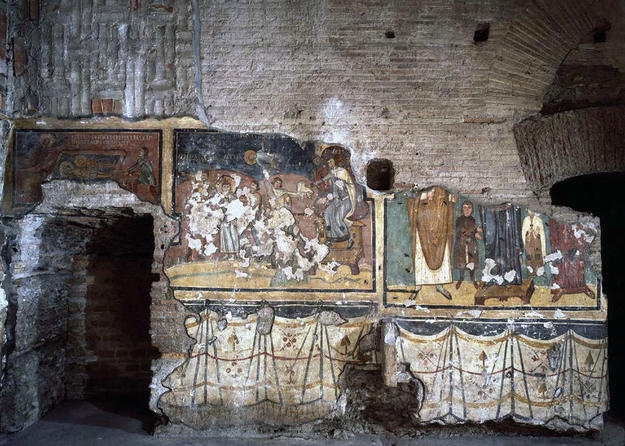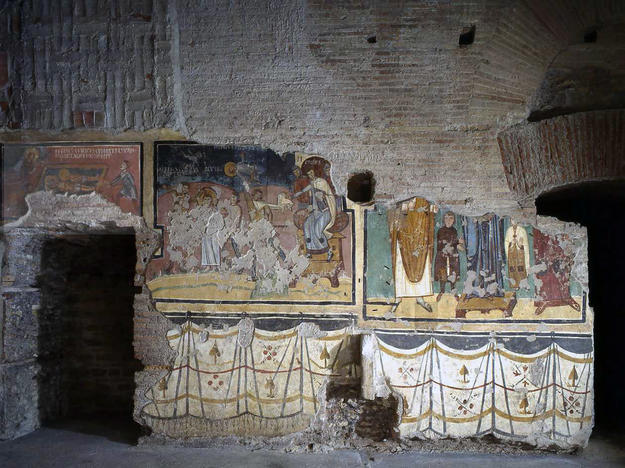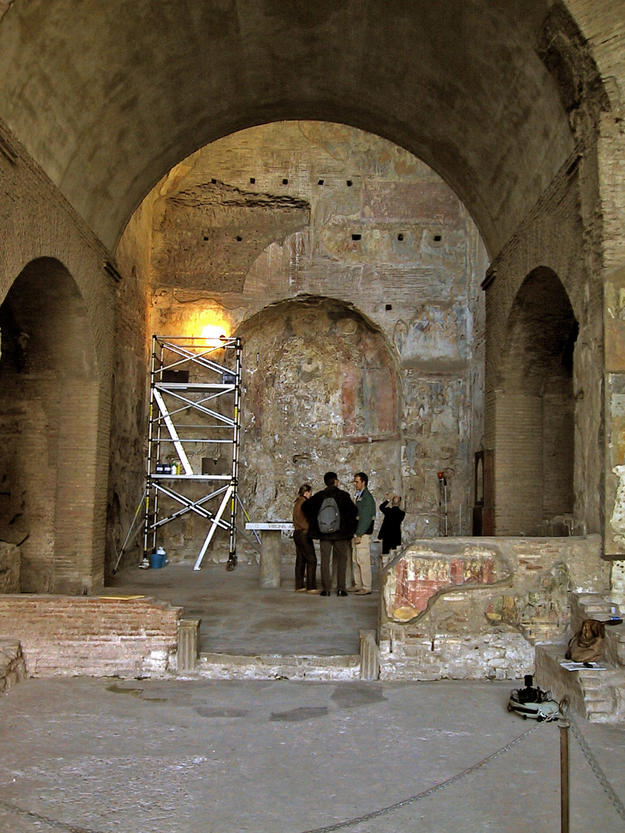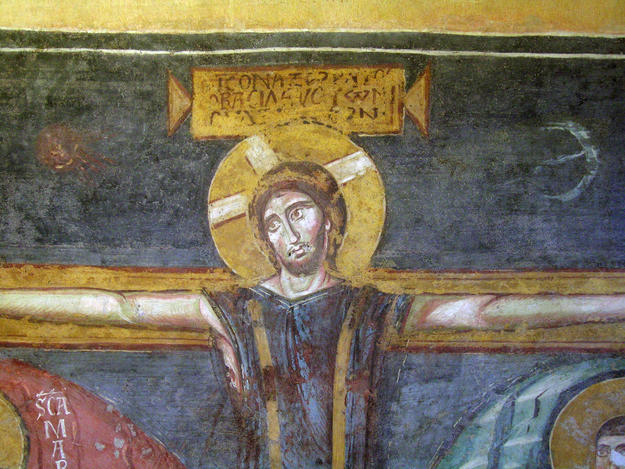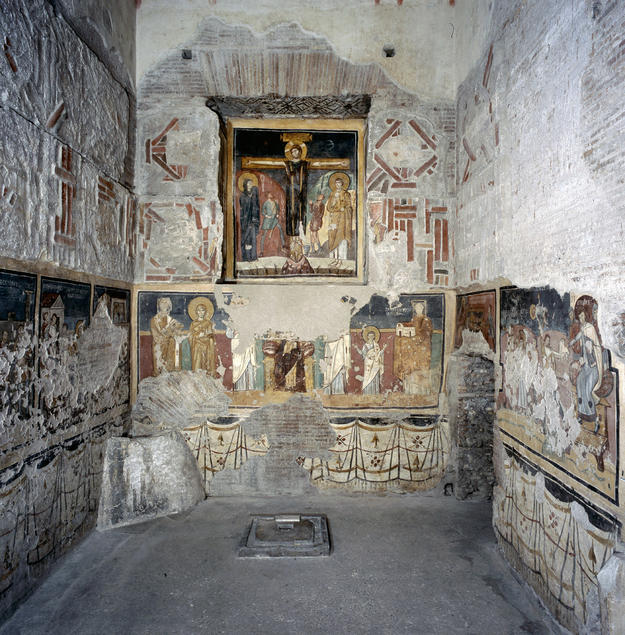Santa Maria Antiqua Church
Background
Located at the base of the Palatine Hill in the Roman Forum, the sixth-century church of Santa Maria Antiqua is one of the earliest surviving Christian monuments in Rome. The church was adapted from an Imperial Roman building dating to the reign of Domitian in the first century. Santa Maria Antiqua contains a unique collection of wall paintings spanning a period from the sixth - late eighth century; they are of utmost importance for understanding the development of early medieval and Byzantine art. Santa Maria Antiqua was abandoned in the ninth century and was subsequently buried during an earthquake. The church was rediscovered in 1900 and restored, but over time the large sanctuary space became a storage space for artifacts from elsewhere in the Roman Forum.
How We Helped
In cooperation with Rome’s Superintendent of Monuments, WMF funded historical research and documentation at Santa Maria Antiqua to determine the significance and conservation potential of several important surviving cycles of early Christian wall paintings. Diagnostic testing allowed conservators to develop a conservation methodology and implement a pilot project to restore the Chapels of the Medical Saints. With their methodologies well established, the team began the final restoration project. As a result of our work at Santa Maria Antiqua, which was not previously open to the public, people can now visit the church on a limited basis.
Why It Matters
Santa Maria Antiqua is situated in the last completely unexcavated major section of the Roman Forum. The preservation of the unique surviving Byzantine-style wall paintings of Santa Maria Antiqua permits in situ viewing of a rare aspect of Christian art in Rome’s most famous public space.

